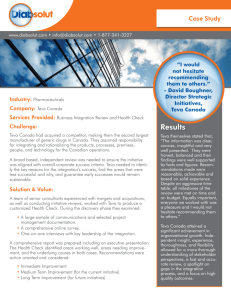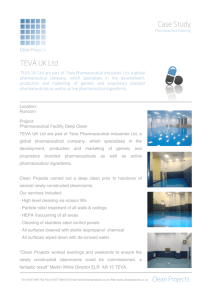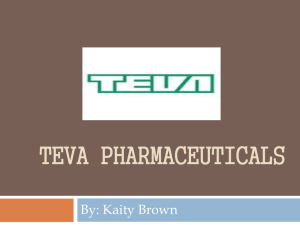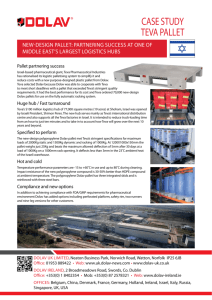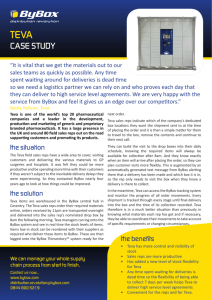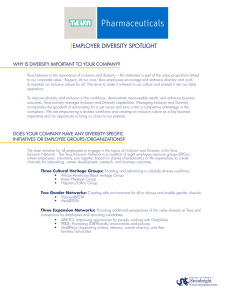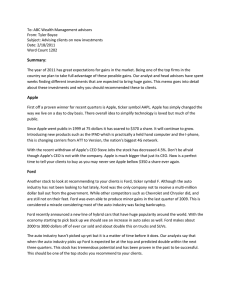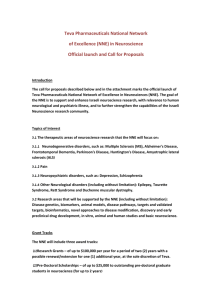TEVA case study final
advertisement
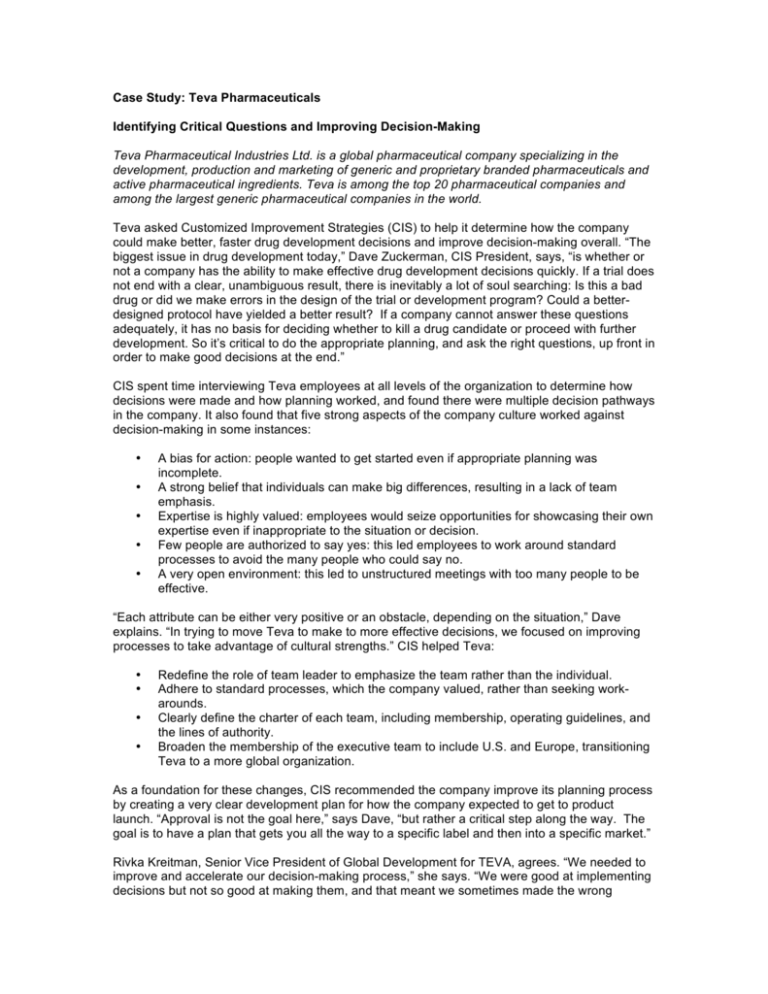
Case Study: Teva Pharmaceuticals Identifying Critical Questions and Improving Decision-Making Teva Pharmaceutical Industries Ltd. is a global pharmaceutical company specializing in the development, production and marketing of generic and proprietary branded pharmaceuticals and active pharmaceutical ingredients. Teva is among the top 20 pharmaceutical companies and among the largest generic pharmaceutical companies in the world. Teva asked Customized Improvement Strategies (CIS) to help it determine how the company could make better, faster drug development decisions and improve decision-making overall. “The biggest issue in drug development today,” Dave Zuckerman, CIS President, says, “is whether or not a company has the ability to make effective drug development decisions quickly. If a trial does not end with a clear, unambiguous result, there is inevitably a lot of soul searching: Is this a bad drug or did we make errors in the design of the trial or development program? Could a betterdesigned protocol have yielded a better result? If a company cannot answer these questions adequately, it has no basis for deciding whether to kill a drug candidate or proceed with further development. So it’s critical to do the appropriate planning, and ask the right questions, up front in order to make good decisions at the end.” CIS spent time interviewing Teva employees at all levels of the organization to determine how decisions were made and how planning worked, and found there were multiple decision pathways in the company. It also found that five strong aspects of the company culture worked against decision-making in some instances: • • • • • A bias for action: people wanted to get started even if appropriate planning was incomplete. A strong belief that individuals can make big differences, resulting in a lack of team emphasis. Expertise is highly valued: employees would seize opportunities for showcasing their own expertise even if inappropriate to the situation or decision. Few people are authorized to say yes: this led employees to work around standard processes to avoid the many people who could say no. A very open environment: this led to unstructured meetings with too many people to be effective. “Each attribute can be either very positive or an obstacle, depending on the situation,” Dave explains. “In trying to move Teva to make to more effective decisions, we focused on improving processes to take advantage of cultural strengths.” CIS helped Teva: • • • • Redefine the role of team leader to emphasize the team rather than the individual. Adhere to standard processes, which the company valued, rather than seeking workarounds. Clearly define the charter of each team, including membership, operating guidelines, and the lines of authority. Broaden the membership of the executive team to include U.S. and Europe, transitioning Teva to a more global organization. As a foundation for these changes, CIS recommended the company improve its planning process by creating a very clear development plan for how the company expected to get to product launch. “Approval is not the goal here,” says Dave, “but rather a critical step along the way. The goal is to have a plan that gets you all the way to a specific label and then into a specific market.” Rivka Kreitman, Senior Vice President of Global Development for TEVA, agrees. “We needed to improve and accelerate our decision-making process,” she says. “We were good at implementing decisions but not so good at making them, and that meant we sometimes made the wrong decision. CIS identified our need for a comprehensive development plan that we can all work against, using it as a check for our clinical development plan, our target profile, and so on.” Teva built a template for this overall plan, carried it through a successful pilot program, and is currently applying it to all its projects. “CIS found that we did too much rework, and that our decision-making pathway was unclear,” Rivka says. “We needed to identify who is specifically responsible for what decisions. Doing this has led in turn to training and to empowering our employees. Once the product development plan is approved, upper management does not need to micro-manage it—the lines of authority are clear within the team, leaving team members free to do their work and be responsible for it within the boundaries of the plan.” The drug development plan has improved Teva’s decision making by clarifying who is involved in and responsible for decisions at each critical step of the process. As a result, meetings have become more streamlined and productive and each person’s role and contribution is clear. “The bottom line for us is that there are critical questions that must be answered at each stage of drug development,” Rivka says. “Creating and adhering to a master plan allows us to identify these questions and know where the answers are coming from, so that we can proceed to the next step with minimal risk.”
